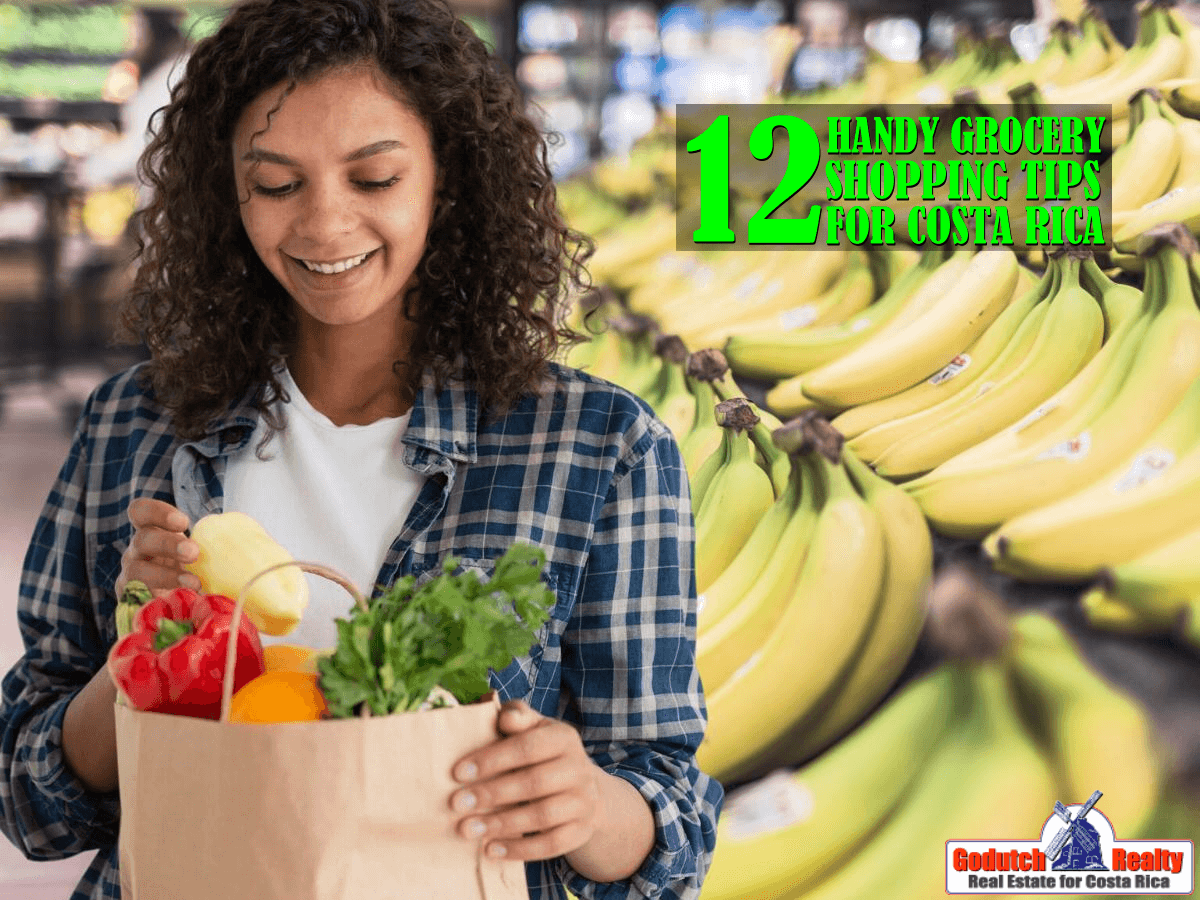Estimated Reading Time: 5 Minutes
I’m sure you’ll love these grocery shopping tips, which are just to make grocery shopping in Costa Rica easier for you.
Every culture has different ways of doing things, and as soon as you move to Costa Rica, you will find out that many things are different from what they were back home. Sometimes we just assume things are done our way (even though we’re sure that’s the best way), and they’re not; we don’t even find out until it’s too late.
But wasn’t that the first reason you moved here? You wanted things to be different, which is why you moved here. Grocery shopping is one of those things that’s quite different from what you are used to, and there is a lot to learn about it. When you go grocery shopping in Costa Rica, you should be aware of several issues quite different than what you grew up with.
Some who read my weekly blogs have probably figured some of these issues out already, but I hope I can help at least some of you with these 12 Handy grocery shopping tips
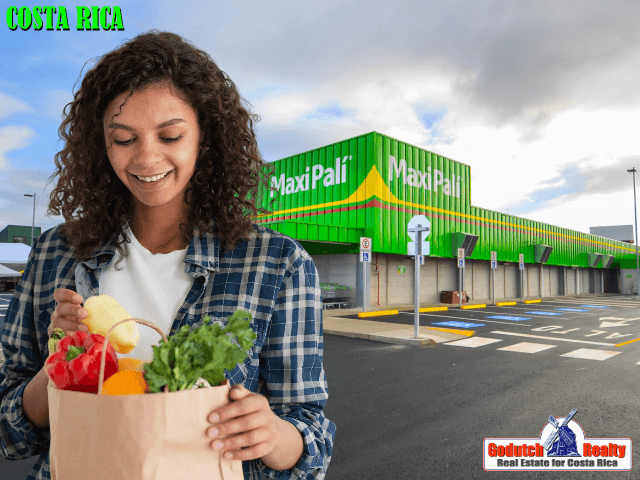
1. Know the Store Types
- Supermarkets (e.g., Auto Mercado, Mas x Menos, Walmart, Maxi Pali). Some have a great variety for local shoppers and others have more imported goods, which are usually more expensive.
- Local Pulperías or Mini Supers – Small neighborhood shops; great for quick buys and basics.
- Ferias (Farmer’s Markets) – Best place for fresh, local, affordable fruits, veggies, herbs, and sometimes meats and cheeses.
- Specialty Stores—Health food stores, bulk stores, or expat-oriented markets (e.g., gluten-free, vegan).
2. Use Delivery Apps & Online Shopping
- Apps like PedidosYa, Uber Eats (groceries too), or Auto Mercado Online offer delivery.
- Many grocery stores like Automercado and Walmart have an online platform.
- Some local ferias and organic farms offer delivery subscriptions.
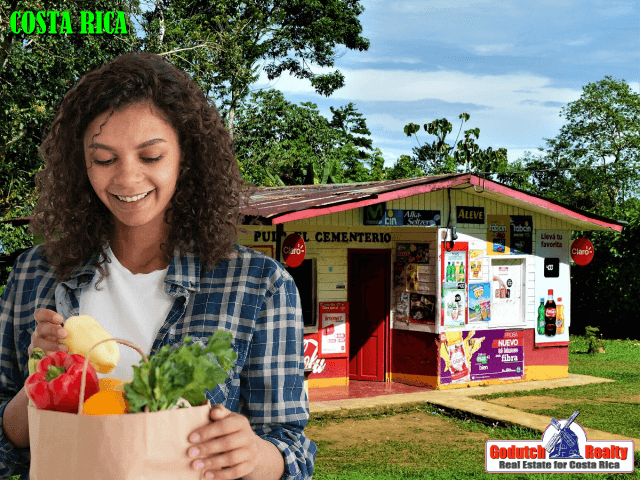
3. Make a List in Spanish (if needed)
Helps with asking grocery store employees and understanding labels. Or download an app like Deepl. A few examples:
- Eggs = Huevos
- Chicken = Pollo
- Cheese = Queso
- Lettuce = Lechuga
4. Cash and Payment
- All stores take credit/debit cards.
- Small stores and ferias often prefer cash (colones), especially in rural areas.
- Use apps like Sinpe Móvil for quick mobile payments if you’re local.
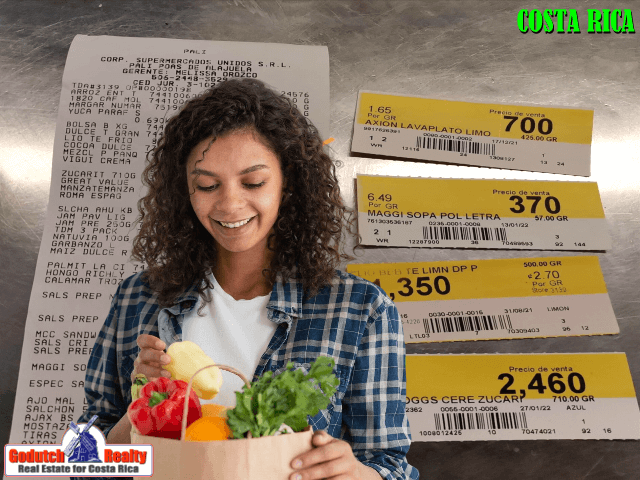
5. Go Local Where You Can
- Local brands (e.g., Dos Pinos for dairy, Pozuelo for snacks) are usually cheaper and of good quality.
- Buy produce in season—cheaper, fresher, and supports local farmers.
6. Best Times to Shop
- Go early to ferias (usually Saturday or Sunday mornings).
- Mid-mornings during weekdays are best to avoid crowds at big stores.
7. Weight and size
We use the metric system here, so if you grew up with a different one, learn to think in the metric system. Many of you are used to measuring in pounds and gallons. In Costa Rica and the rest of Latin America, groceries are sold in grams and kilos. You find that a ¼ kilo is 250 grams and half a kilo is 500 grams. Don’t ask the butcher in the grocery store for half a pound of minced meat because he won’t know what you are talking about. Milk comes in liters unless the product comes from the US.
There are 12 liters of gasoline at the gas station, not 3 gallons. You can also just say “full,” which they understand well if you want a full gas tank. To practice your Spanish, say “tanque lleno por favor.”
You will need to start thinking metrically when you purchase groceries or even a property. If you don’t adapt to the metric system, you will drive yourself crazy for the rest of your life.
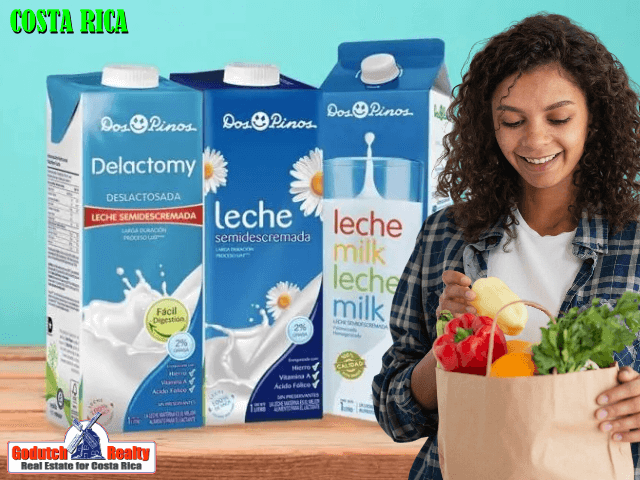
8. Packaging
Most of us are willing to purchase a large package because it is cheaper, right? I’m sorry, but you’re wrong, totally wrong. In Costa Rica, two packages of 250 grams are usually cheaper than one package of 500 grams. Strange? Yes, but you can count on it that 9 out of 10, the smaller packages are cheaper per unit (gram or ml) than the larger ones.
9. Price per unit
Many grocery stores in Costa Rica show the price per unit (gram or ML) on the rack. Many products of the same type have different weights, making comparisons difficult. They usually have a sticker under each product that shows the brand name, the type of product, the content, and the price per unit, so you can easily compare them. These grocery comparisons are often wrong. Use the calculator on your phone to check the price per unit. Don’t waste your time complaining about it.
10. Returns, money back?
In most countries, if you go grocery shopping and you need to return a product for whatever reason, the store will just refund your money without even asking why you are returning it.
Forget about getting your money back in a store in Costa Rica. Some stores make you go through a lot of unnecessary paperwork. They will only give you the credit, so you can spend the money in their store on your next visit. Automercado is the only grocery store I’ve seen that returns your money without asking questions.
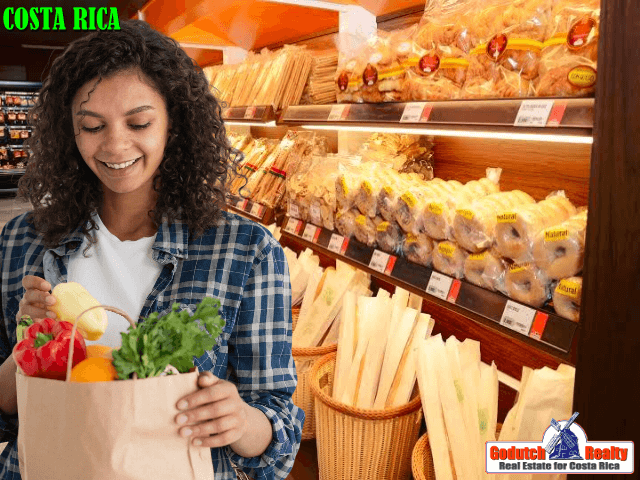
11. Fresh bread
If you purchase bread in the fresh bakery department of any grocery store, they will put the bread in a paper bag. Then the bread will be like chewing gum before the day is over. If you buy fresh bread, ask them to put it in a plastic bag, and you will find it will stay edible much longer.
If your bread is already too difficult to eat, spray it with a little bit of water and put it in the oven for a minute or so.
12. Frequent Shopper
Try to do your Costa Rica grocery shopping in the same grocery stores so they start recognizing you. Once they understand you are a frequent shopper at their store, they will be more open to what they see as a favor and what we see as client-friendly.
We also appreciate your following our blogs, staying with us for your Costa Rica real estate purchases and referrals, and not calling our competitors. Contact us NOW for any real estate-related inquiries.

